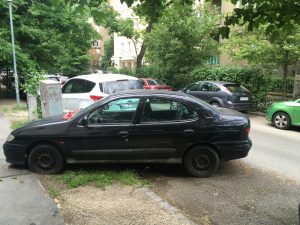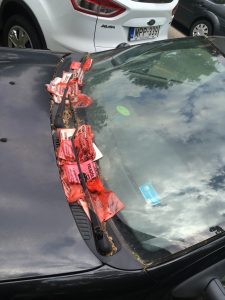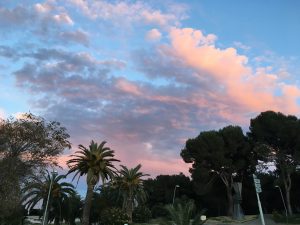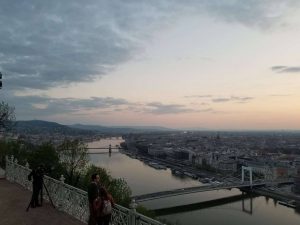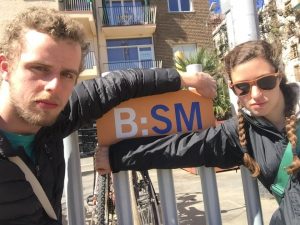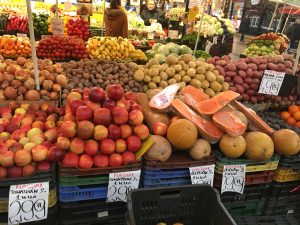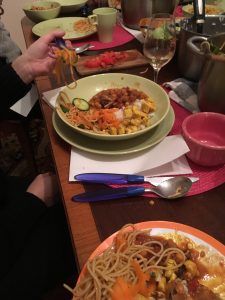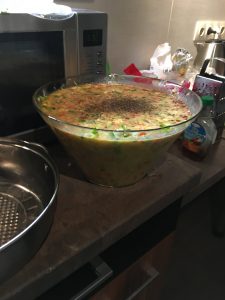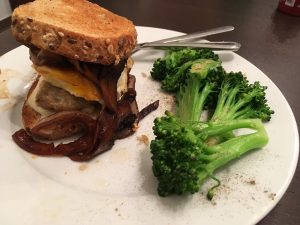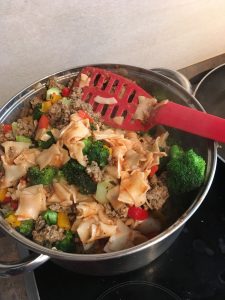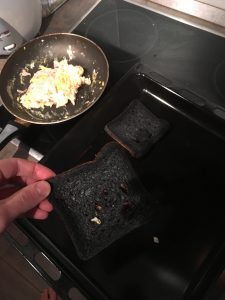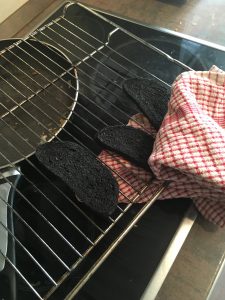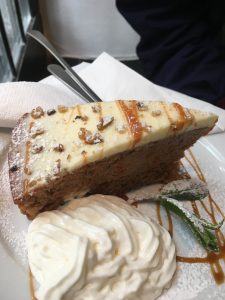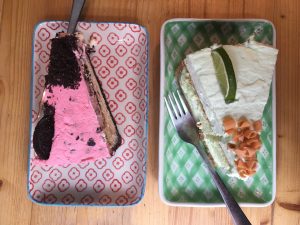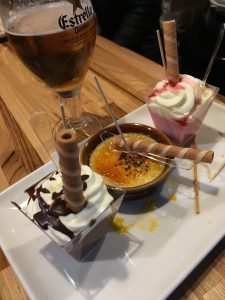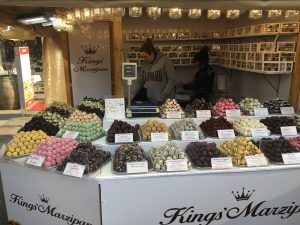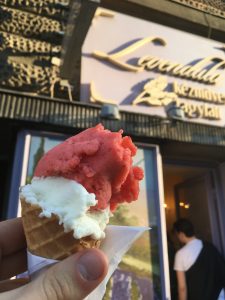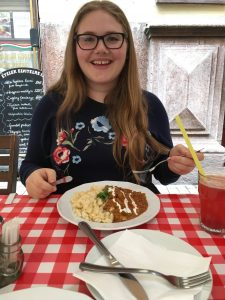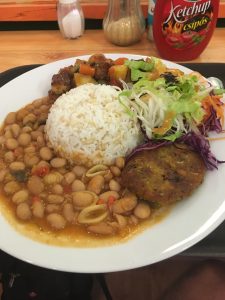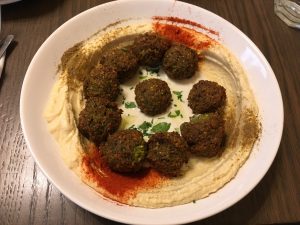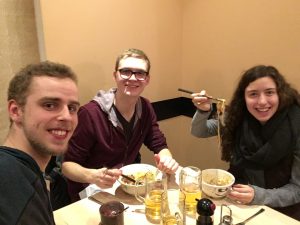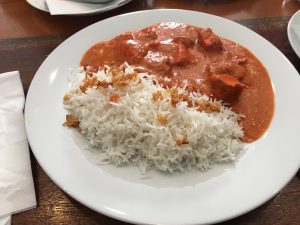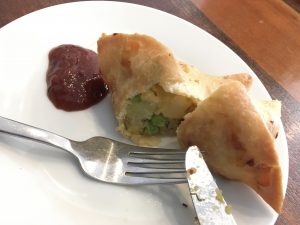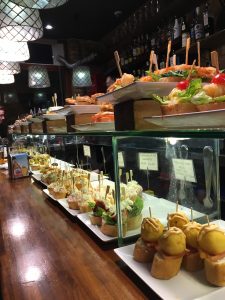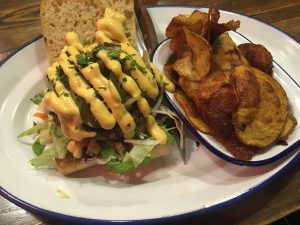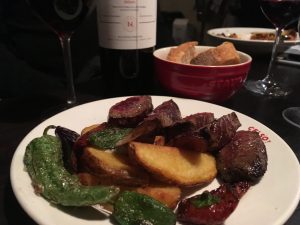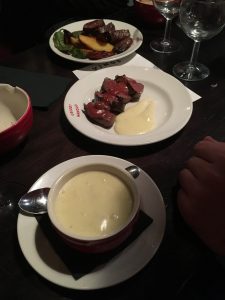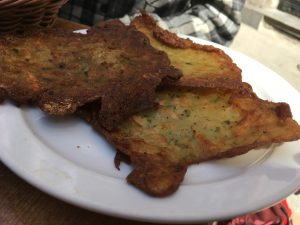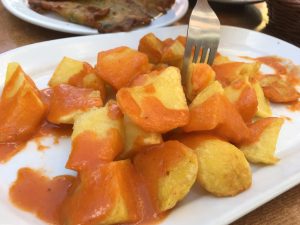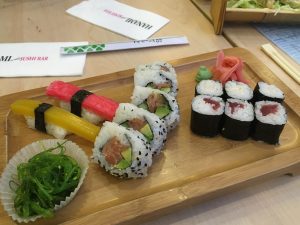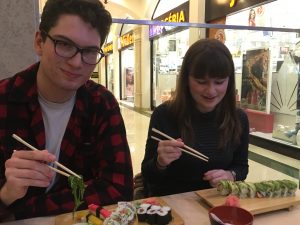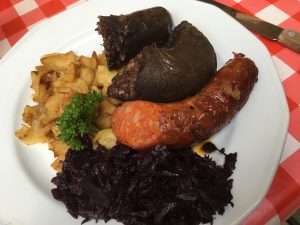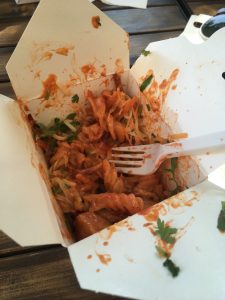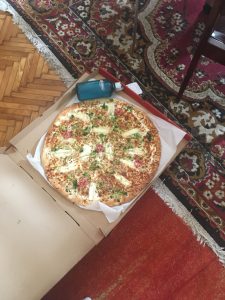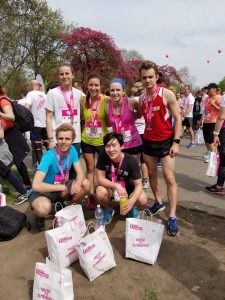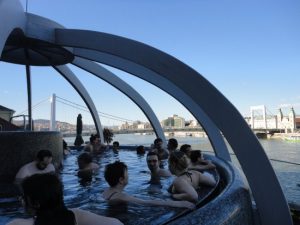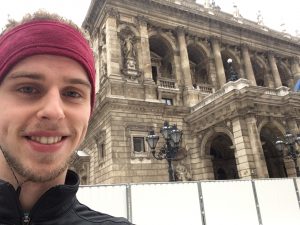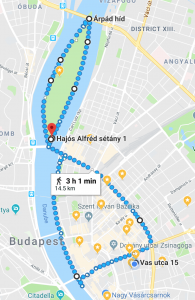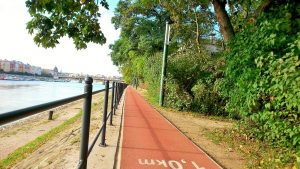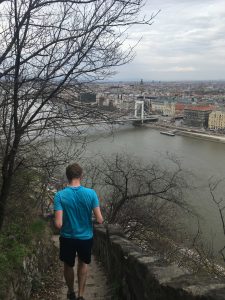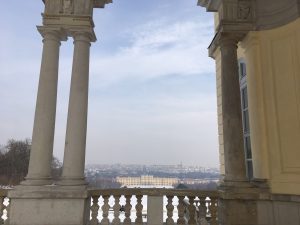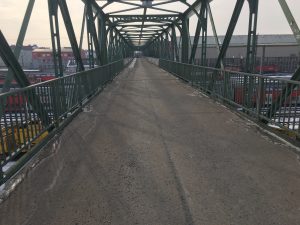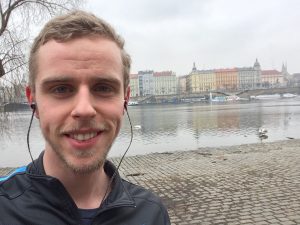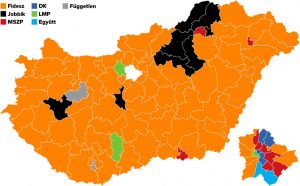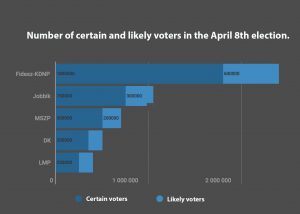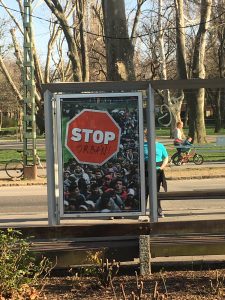When I arrived in Budapest this semester, I was not thinking about travel. This trip was my first time in Europe, and so finding myself on the continent was so exciting that I didn’t immediately consider all the different places I could go once I was here. But fortunately, I met some wonderful people who organized trips and encouraged me to go beyond Budapest–and I got hooked:
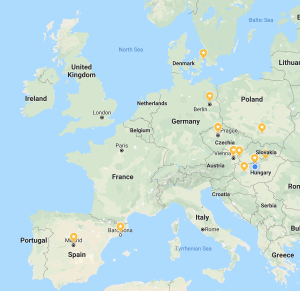
I wanted to highlight each of these places I visited on the weekends, during holidays, and over Spring Break, just to give you an idea of what I’ve been up to when I’m not holed up in my apartment doing math or wandering the streets of Budapest.
So chronologically, we begin with…
Bratislava, Slovakia
My Itinerary: Day trip (Feb 3)
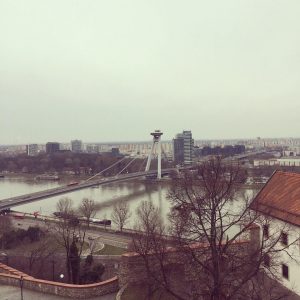
Bratislava’s cool bridge (photo by Alexis Delgado)
Overall Impression: Definitely one day is enough for this city. Sleepy at night, the city offers beautiful views from the Castle Hill and, if you want to pay for it, a trip up to the top of an epic cable-stay bridge.
My Best Photo:

A large empty fountain in the middle of the city.
Best Place to Eat: Only ate at one place, but it was nice. Green Buddha.

The Thai holy basil was great.
Also, they had the most intriguing bathroom…mood lighting?

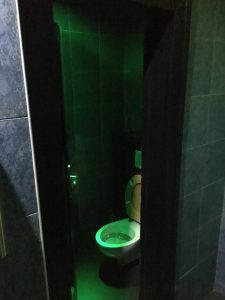
Prague, Czech Republic
My Itinerary: Two-night weekend trip (Feb 16-18)
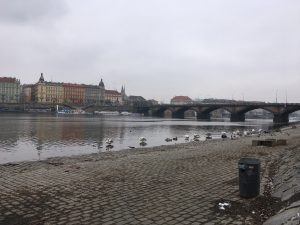
The frightening swans along the Danube.
Overall Impression: Great trip. I recommend the Orange Hostel, right on Wenceslas Square
My Best Photo:
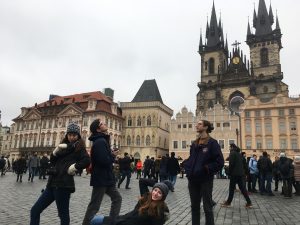
Hidden Gem: Not necessarily hidden, but it’s the place to go: Lucerna. They play 80’s and 90’s dance music with their original music videos. Some of the best dancing I’ve had here in Europe.
Best Place to Eat: Chimney cake stands. You should try one while you’re here.

Thought this was good.
Berlin, Germany
My Itinerary: Two-night weekend trip (Feb 23-25)

Seth, Caroline, and me
Overall Impression: Wonderful trip. This was my fourth weekend in a row traveling, so I had the routine down pat. We saw sunset at the Reichstag—if you are going to Berlin, make sure to go online to request free tickets in advance—and saw some of the major monuments of the city. Also, Caroline and I went on a great run, and we all celebrated Seth’s birthday.
My Best Photo:
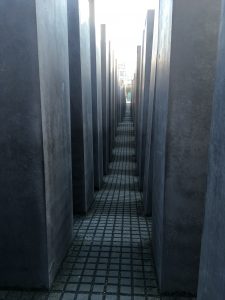
Certainly not a unique photo, but an interesting view of Berlin’s Memorial to the Murdered Jews of Europe (notice the lighter pools of light at corridor intersections)
Hidden Gem: The Spy Museum is not hidden (you’ll see advertisements for it everywhere), but it was a great museum. I was impressed with the setup and fascinated by all the stories of spies and espionage.
Best Place to Eat: Lon Men’s, from earlier post.
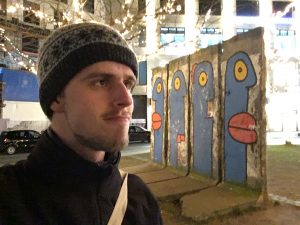
Me and the Berlin Wall.
Vienna, Austria
My Itinerary: Two-night weekend trip (Mar 2-4)
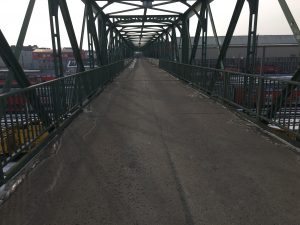
A train yard in Vienna.
Overall Impression: Similar to Budapest, with a better paint job. Travel tip: The Mozart house (where he composed when he was in the city) has a bathroom upstairs that you don’t have to pay for if you just walk in. Try to walk around the city.
My Best Photo:
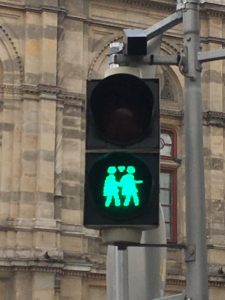
I loved seeing these around the city. Alexis even got a picture of a couple hold hands next to one.
Hidden Gem: The coolest part of our trip was our reason for going. The band Alvvays performed at the Flex club on the Danube as part of the tour for their album Antisocialites. First, they’re an excellent band (check them out on Spotify). Second, the location was very interesting. I recommend trying to find a concert to go to if you’re in Europe. It’s always (alvvays?) fun to have a reason for travelling to a specific destination.
Best Place to Eat: Daily Imbiss, which I mentioned in an earlier blog post

Copenhagen, Denmark
My Itinerary: Spring Break. Four nights (Mar 23-26)
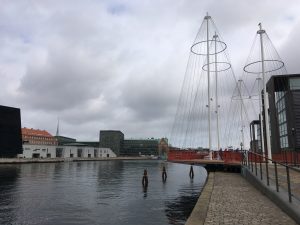
Cool bridges are everywhere in the city.
Overall Impression: A very cloudy but homey city. I stayed with Zaynab and her host family in the outskirts of the city, where it honestly looked like parts of the Midwest. We biked around the city, had great food, went to museums, and even attended Danish Zumba!
My Best Photo:
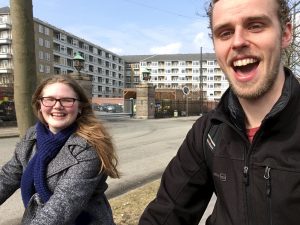
While biking 🙂
Hidden Gem: The David Collection. This private collection of Islamic art is impressive and excellently presented. Zaynab and I wandered around for hours with our high-tech informational tablets. I definitely recommend the room in which the curators display art related to each facet of the religion of Islam. Best part: the collection is free to visit.
Best Place to Eat: At one of the stands in the glass market. There you can try a asdfkjalsdf, a traditional Danish open-face sandwich.

In Free Christiania, the independent state within the city of Copenhagen.
Madrid, Spain
My Itinerary: Spring Break (continued). Three nights (Mar 26-29)

Lachlan at his palace, the Palacio Real
Overall Impression: Stepping off of the plane into a warm city was incredible after the longer-than-expected winter in Budapest and the consistently overcast weather in Copenhagen. Both Seth and I had a wonderful time staying with Tom, Christa, and Lachlan in their Airbnb, exploring the city and eating good food.
My Best Photo:
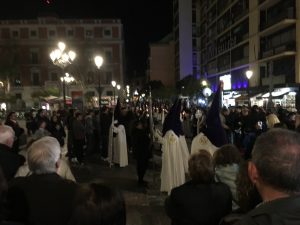
One of the Easter marches.
Hidden Gem: Since we were visiting the week before Easter, we were able to see several religious parades with elaborate floats carried on the backs of several dozen people.
Best Place to Eat: Celso y Manolo. Also, be sure to go to a vermouth bar!

The panorama got a little messed up at the end, but it gets the vibe.
Barcelona, Spain
My Itinerary: Spring Break (continued). Two nights (Mar 30-Apr 1)
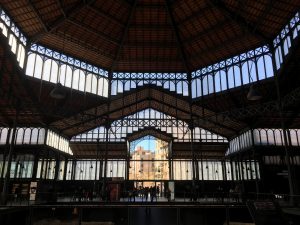
El Born, which used to be an open-air market.
Overall Impression: This was the very end of my trip. I took the high-speed train (up to 200 mph) connecting Madrid to Barcelona, which was awesome. Once in the city, I met up with Caroline and we went to the Sagrada Familia, and several other famous Gaudi-designed buildings. We also ran on the beach and walked through the medieval parts of the city.
My Best Photo:
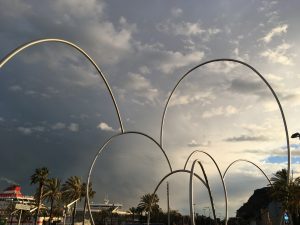
As a storm approached, I got both of these shots.

Hidden Gem: Hiking up the hill to the Montjuïc Castle at sunset was a great adventure. Got these pictures before and after the sunset.
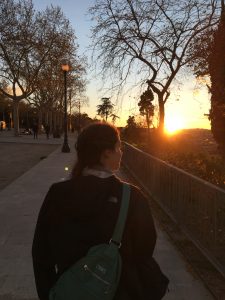
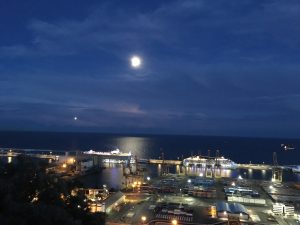
Best Place to Eat: Tapas on the Carrer del Blai.
Kraków, Poland
My Itinerary: Four nights (Apr 28 – May 1)

Overall Impression: I went with Alexis, Caroline, and Kim, Caroline’s mom, to this very interesting city. We took a tour of the city (I recommend going on one of the free walking tours that are offered), visited the Auschwitz concentration camp complexes, and went underground to see the salt mines under the city.
My Best Photo:
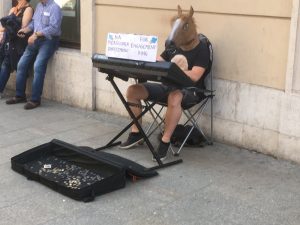
One of the most intriguing street performers I’ve seen.
Hidden Gem: We were there during the Off Camera film festival. If you’re in the city when this is going on, I recommend that you check it out! You can see some fascinating film, like the horror film we saw: Beast. Also, I would recommend the Lost Soul’s Alley, if you’re up for a haunted house—and try the yellow level if you’re adventurous.
Best Place to Eat: The restaurant Curry House was a solid choice.

Révfülöp, Lake Balaton, Hungary
My Itinerary: One-night weekend trip (May 12-13)
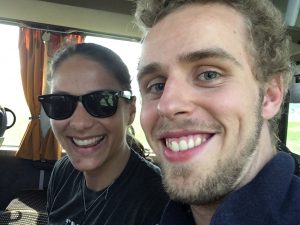
On our way!
Overall Impression: Alexis and I decided to go on this final trip outside of Budapest two weeks before leaving (most of us are staying in the city during this final weekend here). We took a regional train and stayed on the beach most of the time, reading and swimming in the nice and shallow water.
My Best Photo:
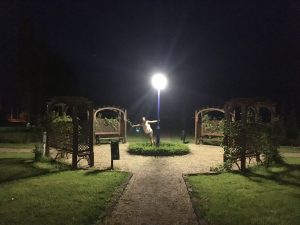
Hidden Gem: It was clear from the food carts and water slide that this town is a popular destination during the summer. But visiting in mid-May, we had the perfect combination of nice weather and peaceful beaches. I got sunburned like never before, but I’ve learned my lesson.
Best Place to Eat: Gomba Étterem, the calzone was just what I wanted.
~ ~ ~
It was fun traveling around Europe, but I think that my favorite place is Budapest. Nowhere like home.
Nathaniel

